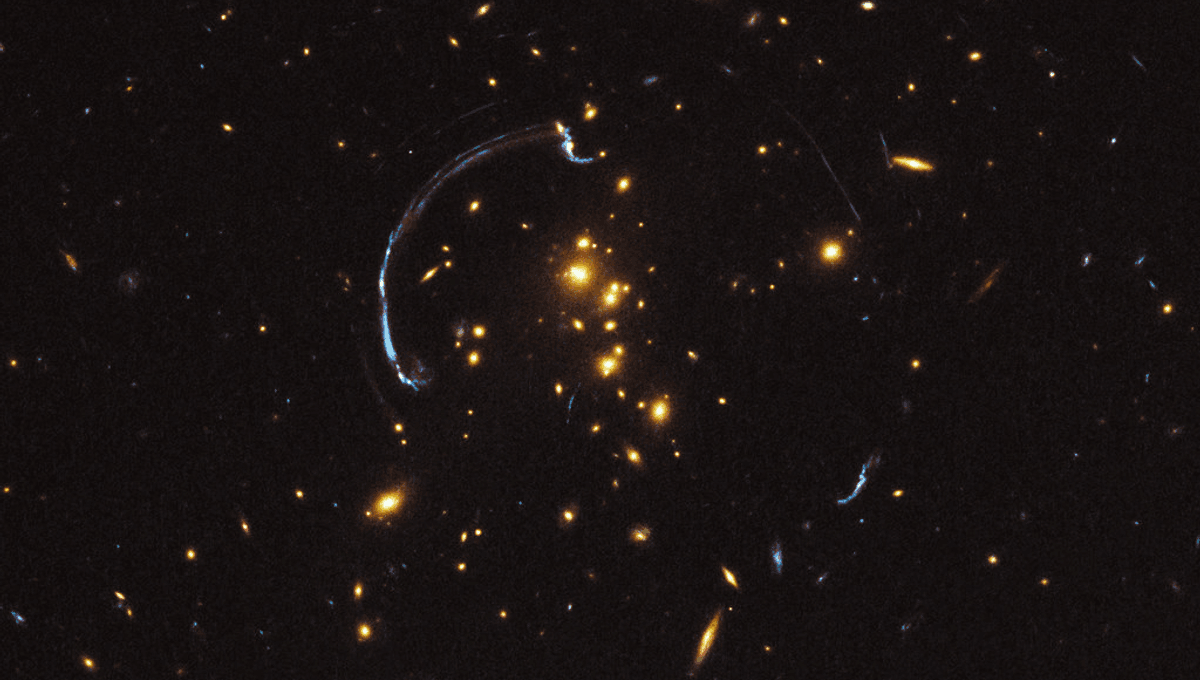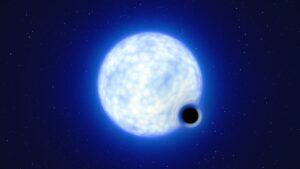A new explanation for why we haven’t detected dark matter suggests that it doesn’t exist. Instead, the author thinks we have misunderstood gravity. He is not the first to propose this, but the new proposal of massless gravity created by topological defects in spacetime is particularly novel.
Dark matter was first proposed in 1932 based on the observation that galaxies move in ways consistent with their mass being greater than the sum of their stars and gas. What started as a few surprising measurements blossomed. Simple explanations such as stellar populations being undercounted have definitely failed.
A wide range of options have been proposed for what dark matter might consist of, from primordial black holes to subatomic particles. So far, we haven’t found any of them except rogue planets and stellar-mass black holes each of which may represent only a fraction of one percent of what is missing.
This has led some physicists to wonder if we’ve got it all wrong. Perhaps there is no dark matter and instead gravity works differently on larger scales than we think. One version of this, known as modified Newtonian dynamics (MOND), has attracted quite a bit of attention, but has proved far more popular with online commentators than with physicists, who generally find it highly unlikely.
Professor Richard Liu of the University of Alabama in Huntsville has stepped into this situation with his own spin on gravity, which argues that it can exist without mass. If he’s right, it would upend much of cosmology and make the search for dark matter an inconvenient blip in the march of science, much like the phlogiston. However, there is a long, long way to go before it is widely treated as plausible, let alone probable.
Lieu suggests that topological defects were created in spacetime shortly after the Big Bang.
“Topological effects are very compact regions of space with a very high density of matter, usually in the form of linear structures known as cosmic strings, although 2D structures such as spherical shells are also possible,” Lieu said in a statement.
“The shells in my paper consist of a thin inner layer of positive mass and a thin outer layer of negative mass; the total mass of the two layers—which is all that can be measured in terms of mass—is exactly zero, but when a star lies on top of that shell, it experiences a large gravitational force pulling it toward the center of the shell.”
The force here would have a force equal to the inverse of the distance, not the inverse of the square of the distance as applied under Newton’s law of gravity. Whether this is physically possible is unproven, but Lieu claims to show it works mathematically.
Lieu proposes that as light passes through an object such as a galaxy in a gravitational lens, it bends slightly inward as it passes through these shells. This bending would be barely distinguishable from what would happen if there was more mass pulling on it. The same is true for the motions of a star around a galactic center of mass.
Since, as Lieu points out, these two phenomena are the basis for our confidence that dark matter exists, an alternative process for both would make dark matter unnecessary.
On the other hand, the idea of shells with positive and negative mass on each side is equally unproven, and it is considerably more difficult to explain why they exist at all.
Lieu suggests that the creation of these defects is related to a “cosmological phase transition” in the early universe, where matter throughout the universe underwent a change of state.
“My own inspiration came from my quest to find another solution to the gravitational field equations of general relativity,” Liu said. This could give a “limited force of gravity in the absence of any detectable mass”.
Lieu’s proposal requires several things for which we have no direct evidence, not just one, as in the case of dark matter. The researcher himself admits: “It is currently unclear what exact form of phase transition in the universe could lead to topological defects of this kind.”
He suggested several possible steps, such as that the shells were once airplanes or straight strings that coiled up. At the moment, though, it all sounds about as ad hoc as the epicycles used by Ptolemaic astronomers to explain the orbits of the planets.
In defense of his hypothesis, however, Liu can point out that the idea is new enough that no one has looked for proper evidence. On the other hand, billions of dollars and some of the best minds of our generation have been devoted to the failed search for dark matter.
“This initiative was in turn driven by my frustration with the status quo, namely the idea of dark matter’s existence despite the lack of any direct evidence for a century,” Liu added.
“Of course, the presence of a second solution, even if it is very suggestive, is not in itself enough to discredit the dark matter hypothesis – it can be an interesting mathematical exercise at best,” Liu concluded. “But this is the first evidence that gravity can exist without mass.”
The proposal was published in Monthly Notices of the Royal Astronomical Society.



